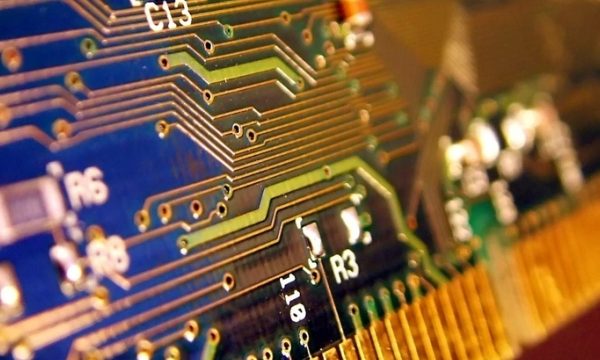
Deepfake technology is rapidly reshaping the digital landscape and posing significant concerns for our society. With its ability to manipulate and generate seemingly authentic audio, images, and videos, deepfakes have the power to deceive and mislead on an unprecedented scale. By utilizing AI algorithms, this technology can seamlessly swap faces, alter voices, and even create entirely fictional scenarios that appear genuine to the untrained eye. While deepfakes may have initially gained popularity as a means of creating humorous content or celebrity impersonations, the potential consequences of their misuse are far-reaching and ominous.
In recent years, deepfakes have gained notoriety due to their potential for malicious intent. False information can easily be disseminated through doctored videos or audio recordings, as their realistic appearances make it difficult to distinguish real from fabricated. This technology poses significant risks in numerous domains, including politics, journalism, and personal relationships. With the capability to forge evidence, deepfakes could undermine democratic processes, influence public opinion, and tarnish reputations.
Moreover, the rise of deepfake technology raises critical ethical concerns. Consent and privacy are increasingly at stake, as individuals can find themselves unknowingly portrayed in compromising or fabricated situations. The sheer ease with which deepfakes can be created and distributed raises questions about the veracity of digital media and the erosion of trust in our increasingly digital society.
As we delve into the intricacies of deepfake technology, it becomes evident that we must address these challenges head-on. Legislation and technological advancements aimed at detecting and combatting deepfakes are crucial for preserving the integrity of information and safeguarding individuals from potential harm. The road ahead will undoubtedly be complex, but by shining a light on the dangers of deepfake technology, we can work towards building a more secure and trustworthy online environment.
Understanding Deepfake Technology
- Deepfake Technology: An Introduction
Deepfake technology refers to the sophisticated manipulation of digital content using artificial intelligence algorithms. It enables the creation of highly realistic forged videos or images that appear to be genuine but are actually fabricated. Deepfakes have gained significant attention in recent years due to their potential misuse and the ethical concerns they raise.
- How Deepfakes are Created
Faceswap
Deepfakes are created by training deep learning models on massive amounts of data, usually consisting of thousands of images or videos of a particular person. These models learn to analyze and understand the key facial features and expressions of the individual. Once trained, the models can generate new content by mapping the features of the target person onto the source material.
- Potential Impacts and Dangers
The rise of deepfake technology poses serious concerns on various fronts. One of the foremost dangers lies in its potential to spread misinformation and disinformation on a large scale. Deepfakes can be used to create convincing fake news, alter political speeches, or even fabricate evidence in legal cases. They blur the lines between reality and fiction, making it increasingly difficult to discern what is true and what is not.
Moreover, deepfakes can have severe consequences for individuals whose identities are maliciously used without their consent. They can be subjected to reputational damage, harassment, or even emotional distress. Deepfakes have the potential to undermine trust in digital media, making it harder to believe what we see and hear.
Understanding the technology behind deepfakes is crucial to recognize their potential threats and develop effective countermeasures. Awareness and education are key in mitigating the risks associated with deepfake technology.
The Potential Risks and Dangers
Deepfake technology has undoubtedly brought about numerous risks and dangers that society needs to be aware of. With its ability to manipulate and fabricate realistic-looking videos and images, the potential consequences are far-reaching.
Firstly, one significant danger lies in the ease with which deepfake technology can be used to spread misinformation and disinformation. We now face the alarming possibility of not being able to trust the authenticity of visual evidence. Political figures, celebrities, and ordinary individuals alike can be targeted, as anyone’s identity can be hijacked to create false narratives. This poses a genuine threat to public trust and can have severe implications for democratic processes and public opinion.
Secondly, deepfakes can have a detrimental impact on personal relationships and privacy. By superimposing one person’s face onto another’s body, malicious actors can create explicit or compromising content that appears shockingly real. This can lead to defamation, harassment, and even blackmail. Victims may suffer reputational damage, emotional distress, and numerous other harmful effects, as their images are manipulated and used against their will.
Lastly, deepfake technology has the potential to escalate conflicts and provoke unrest. By manipulating videos or images of public figures, it becomes easier to sow discord and incite violence. Deepfakes can be used as tools to wage information warfare, exacerbating divisions within society and undermining social cohesion. The consequences not only affect individuals, but entire communities and nations as a whole.
In conclusion, the rise of deepfake technology brings with it a myriad of risks and dangers that must not be ignored. From the spread of misinformation to the violation of personal privacy, and the potential societal unrest, these threats require urgent attention. It is crucial for researchers, policymakers, and technology developers to collaborate and find effective solutions to combat the dark side of this rapidly advancing technology.
Addressing the Challenges and Solutions
The rise of deepfake technology presents a myriad of challenges that are both complex and far-reaching. However, as with any technological advancement, there are solutions that can help mitigate the dangers associated with this phenomenon.
One of the key challenges is the potential misuse of deepfake technology for malicious purposes. The ability to create highly convincing fake videos can have severe consequences, including the spread of false information, defamation, and even political manipulation. To address this, it is essential to implement robust and sophisticated detection algorithms that can identify deepfake content with a high degree of accuracy. This involves leveraging machine learning techniques to analyze various visual and audio cues, identifying anomalies that point towards the presence of manipulated media.
Another challenge lies in the ethical implications of deepfake technology. The creation and distribution of non-consensual deepfake pornography, for example, raises serious concerns about privacy and consent. One solution to this issue is the establishment of stricter legal frameworks that criminalize the creation and distribution of non-consensual deepfake content. Additionally, raising awareness about these ethical concerns and educating the public about the potential risks can contribute to a more responsible usage of the technology.
Furthermore, collaboration between various stakeholders is crucial in addressing the challenges posed by deepfake technology. Governments, tech companies, researchers, and civil society organizations need to work together to develop comprehensive strategies and policies. These should include public campaigns, support for research and development of countermeasures, and international cooperation to tackle the global nature of deepfake threats.
In conclusion, while deepfake technology presents significant challenges, it is possible to address and mitigate its dangers through the implementation of robust detection algorithms, ethical frameworks, and collaborative efforts. By doing so, we can strive to ensure the responsible and secure use of this technology, safeguarding both individuals and society at large from its potential harms.

